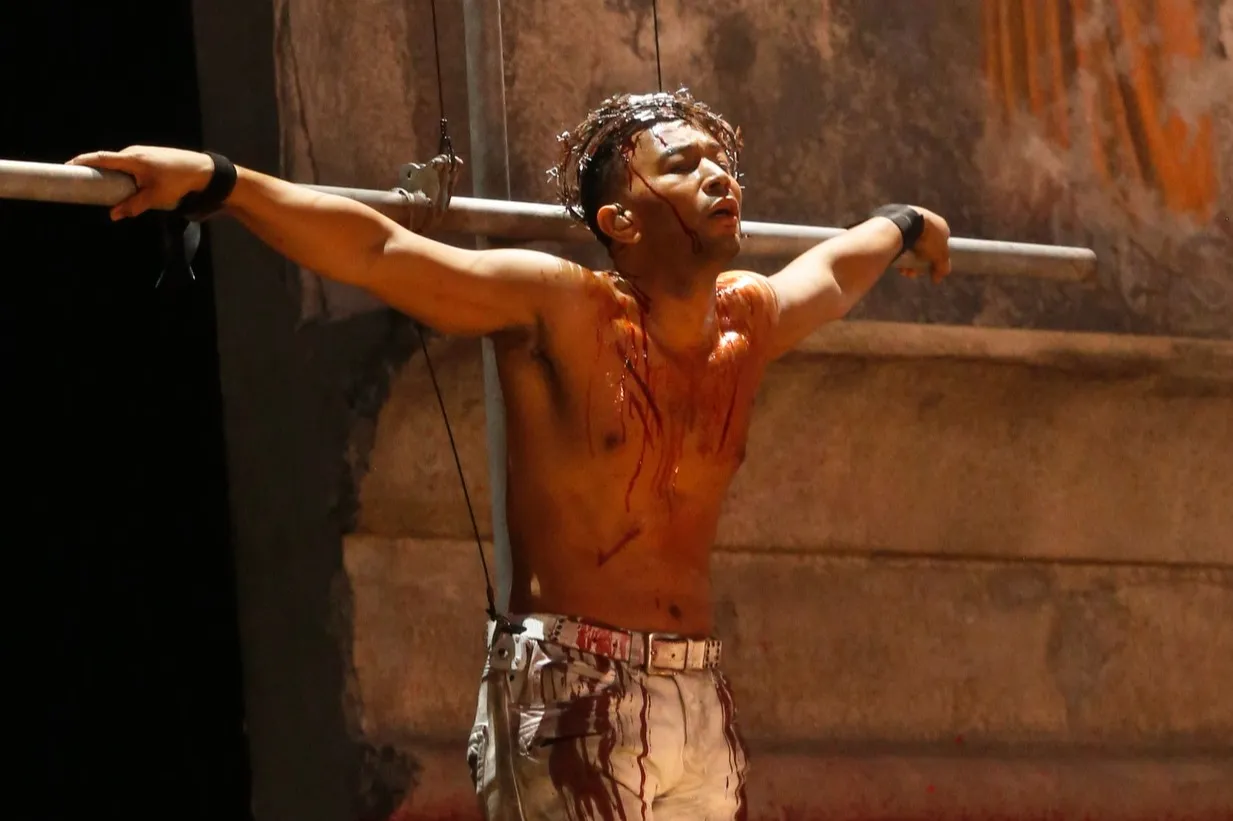Woke theatre bosses slap trigger warning on Jesus Christ Superstar production

WOKE theatre chiefs have warned musical Jesus Christ Superstar will “include an onstage depiction of the crucifixion” when it returns next year
Staggered fans have hit out at producers who have also seen fit to alert would-be watchers that the rock opera also has in it “some violence” and “imitation blood”.
Tickets only went on sale yesterday for the work which will be staged at the London Palladium.
It will star Eurovision and “Space Man” crooner Sam Ryder playing the part of Jesus.
It recounts the final week of Jesus’ life, from the perspective of his disciple and betrayer, Judas Iscariot.
The original — condemned by religious groups for its “sympathetic” portrayal of Judas — opened in London in 1972 and closed in 1980 after 3,357 productions.
Gerald Dixon, an admirer of the musical, which includes hits “I Don’t Know How to Love Him” and “Superstar”, was among those nonplussed by the warning attached to the forthcoming show.
He told The Sun: “What next? A warning that the hit musical includes catchy tunes?
“This nonsense is enough to make anyone utter the Lord’s name in vain.”
The Tim Rice and Andrew Lloyd Webber show runs from June to September, with tickets costing up to £335.
LW Theatres, London’s largest operator of musical theatres, was contacted for comment on the warning yesterday.


